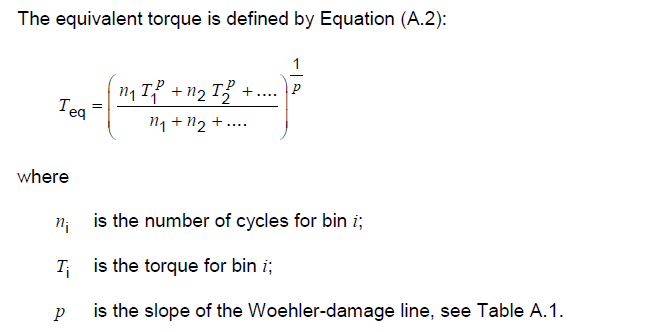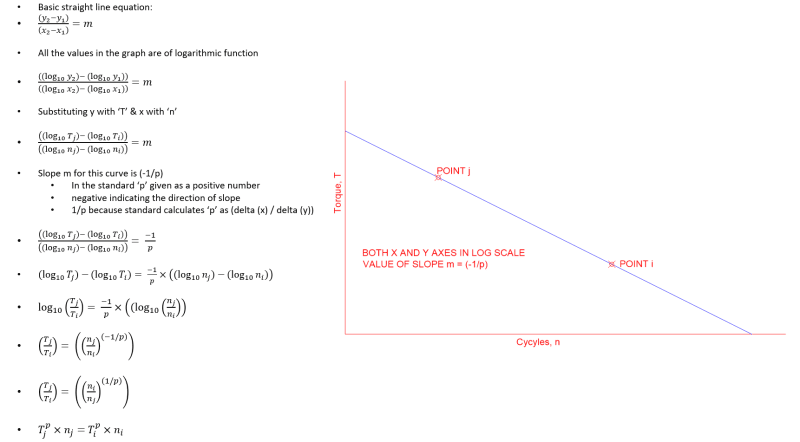namelessudhay
Mechanical
- May 24, 2010
- 20
Palgmer-Miner equation is used in ISO standard ISO 6336-6. I want to understand how it is derived. It helps to consolidate damage caused by multiple torque, cycle bins. A bin means a torque applied for a given number of cycle. As an outcome of the equation, a single equivalent torque that produces the total damage caused by multiple bins for the total number of cycles as original bins.
The equation is:

Pl. note that coordinates n1,T1; n2,T2 and n3,T3 do not need to be on the same line.
My objective is to derive the above equation. While I attempted to do that, I could progress to this level:

Can someone help to proceed further to reach until the equivalent torque formula given in the ISO standard? Many thanks in advance!
The equation is:

Pl. note that coordinates n1,T1; n2,T2 and n3,T3 do not need to be on the same line.
My objective is to derive the above equation. While I attempted to do that, I could progress to this level:

Can someone help to proceed further to reach until the equivalent torque formula given in the ISO standard? Many thanks in advance!

